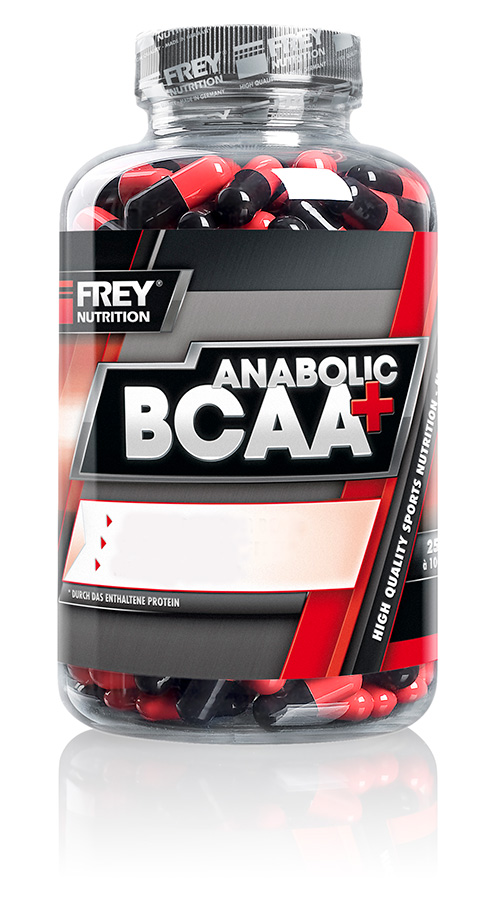WHAT ARE BCAAs AND WHAT ARE THEY MADE OF?
BCAAAS consist of the three essential amino acids L-leucine, L-isoleucine and L-valine. The supply of essential amino acids is vital for the body because it cannot produce them itself.
Therefore, they must be consumed with food. Athletes like to use BCAA in both strength and endurance sports to maintain the natural balance in energy and protein metabolism.
THE OPTIMAL TIMES TO TAKE BCAAs ARE BEFORE AND AFTER TRAINING.
The body needs them to re-synthesize the amino acids glutamine and alanine used up during high levels of exertion, e.g. during training, and thus ensure that the muscles are supplied with sufficient BCAAs. BCAAs are needed to build almost all proteins. Approximately 35% of muscles consist of BCAAs. They also play a key role in the transport of nitrogen and energy between the muscles and the liver. They can be reversibly converted into the corresponding keto acids (deamination/amination). BCAA amino acids are an ideal supplement to conventional amino acid products and are regularly used by many athletes from numerous sports. On training days, the ideal times to take them are before and after training. On non-training days, they should be taken with meals throughout the day. On training days, BCAAs are always preferred in capsule and powder form due to their rapid absorption, but on non-training days, BCAA tablets are more popular for slow absorption.
ATHLETES HAVE AN INCREASED NEED FOR BCAAS
BCAAs normalize the tryptophan concentration in the brain and thus the serotonin concentration, which can lead to less fatigue. BCAAs are found in almost all proteins. Particularly high amounts are found in whey protein (20 - 25 g/100 g), casein (17 - 22 g/100 g), whole egg (17 - 20 g/100 g) and soy (15 - 19 g/100 g).
BCAAs should always be optimal ratio (leucine : isoleucine : valine = 2:1:1) BCAAs are relatively insoluble in water and therefore limit the solubility of many amino acid mixtures. Overdose symptoms with BCAAs are not known at doses of up to 50 g/day. If there is an excess of BCAAs, they are converted to glucose or glycogen.
When taken before training, BCAAs can also be used to generate energy. Since our body first uses free BCAAs from the blood plasma, a regular supply of BCAAs is particularly important.
THE RIGHT TIME TO TAKE IT
To take advantage of the effect of BCAAs, they should be taken with water around 30 minutes before training. At this point, BCAAs in powder or capsule form make the most sense, as this is the fastest way for muscle cells to absorb them. 1 g of BCAAs should be taken per 10 kg of body weight. For an athlete with a body weight of 80 kg, this corresponds to 8 g = 8 capsules.
BCAAs in powder form should not be mixed with water due to their poor water solubility, but should be taken directly with a glass of water.
DURING DIET PHASES, BCAA TABLETS ARE IDEAL FOR A SLOW AND CONSTANT SUPPLY!
Immediately after training, intake with protein like TRIPLE WHEY and quickly available carbohydrates as maltodextrin DE 12 such as MALTO 95 makes sense. BCAAs are therefore taken by well-informed athletes together with PWN. After training, the same dosage applies as before.
During diets, BCAAs are suitable for effectively covering the increased BCAA requirements of the muscles. A balanced intake throughout the day is the most sensible option when dieting, as the BCAAs are then evenly available to the muscles. In this case, the intake of BCAAs in tablet form is recommended, as they are available in the BCAA TABS Since the branched-chain amino acids are absorbed slowly and constantly and are available to the muscle cells over a longer period of time, they can optimally develop their positive properties.












